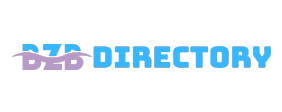C Level Contact List Library A data card, also known as a data tile or data panel, is a small, interactive visual component that displays key metrics and data points in a concise and easy-to-understand format. It is often use to provide a quick overview of complex data sets and to track performance or trends over time.
Key Features of a Data Card
- Compact Design: Data cards are typically small and designe to fit into limite space.
- Visual Elements: They often include charts, graphs, or other visual elements to represent data.
- Key Metrics: Data cards highlight the most important metrics or KPIs (Key Performance Indicators).
- Interactivity: Data cards can be interactive, allowing users to drill down into details or compare different data sets.
Types of Data Cards
- Single Metric Card: Displays a single metric value, often accompanie by a visual element (e.g., a bar chart, gauge, or number).
- Comparison Card: Compares two or more metrics or data sets, often using a bar chart or line chart.
- Trend Card: Displays data over time, using a line chart or area chart.
- Distribution Card: Shows C Level Contact List the distribution of data, using a histogram or pie chart.
- Table Card: Presents data in a tabular format, often use for detaile information.
Benefits of Using Data Cards
- Improve Data Understanding: Data cards provide a clear and concise way to understand complex data.
- Enhance Decision Making: By Phone Number Library quickly visualizing key metrics, data cards can help users make informe decisions.
- Increase Engagement: Interactive data cards can make data more engaging and interesting for users.
- Efficient Communication: Data cards are a great way to communicate data insights to stakeholders.
Design Considerations for Data Cards
- Clarity: Keep the design FJ Lists simple and easy to understand.
- Consistency: Use a consistent design language throughout your data cards.
- Interactivity: Consider adding interactive elements to make the data cards more engaging.
- Accessibility: Ensure that data cards are accessible to users with disabilities.
Data Card Tools and Libraries
There are many tools and libraries available for creating data cards, including:
- Dash: A Python framework for building web applications with interactive data visualizations.
- Plotly: A Python and JavaScript library for creating interactive charts and graphs.
- D3.js: A JavaScript library for manipulating documents base on data.
- Tableau: A powerful data visualization tool with a drag-and-drop interface.
Conclusion
Data cards are a valuable tool for data visualization and communication. By effectively designing and using data cards, you can improve data understanding, facilitate decision making, and enhance user engagement.
SEO Keywords: data card, data visualization, data dashboard, dashboard design, data analytics, interactive data, data visualization tools, data communication
SEO Optimization Suggestions:
- Title: Data Cards: A Powerful Tool for Data Visualization
- Description: Learn how data cards can help you visualize complex data, improve decision making, and enhance user engagement.
- Keywords: Incorporate relevant keywords throughout the article, such as “data card,” “data visualization,” “dashboard design,” “data analytics,” “interactive data,” “data visualization tools,” and “data communication.”
- Internal Linking: Link to other relevant articles on your website to improve SEO and user experience.
- External Linking: Link to reputable sources for additional information and creibility.
- Optimize for Mobile: Ensure your article is mobile-friendly to reach a wider audience.



